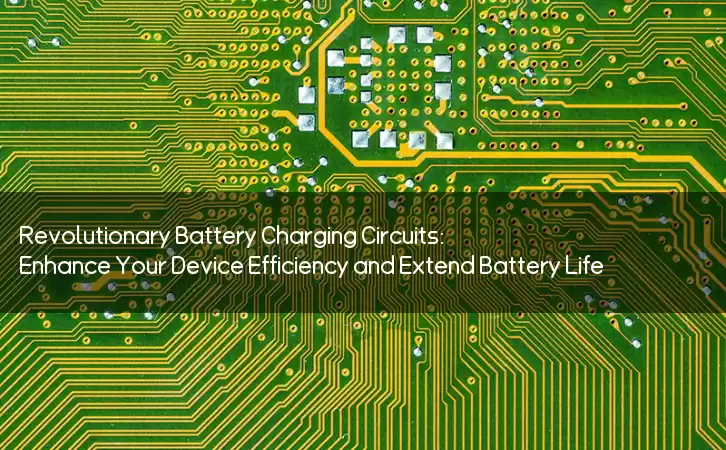Information Center
Revolutionary Battery Charging Circuits: Enhance Your Device Efficiency and Extend Battery Life!
Published:2023-07-02 10:34:29 Author:Green WCND Views:75With the ever-increasing use and demand of electronic devices such as smartphones, laptops and tablets, the need for efficient battery charging circuits has become more apparent than ever before. When it comes to battery charging circuits, there are various types and designs available, each with their own unique features and specifications. In this article, we will be discussing the basics of battery charger circuits, their working principles, and the different types available in the market.

Fundamentally, a battery charger circuit is designed to convert an AC or DC input voltage to a DC output voltage suitable for charging a battery. These circuits can be broadly classified into two categories: linear charger circuits and switching charger circuits.

Linear charger circuits are simple and easy to design, but they are typically less efficient and generate a lot of heat during operation. This can be a major drawback, as excessive heat can cause damage to the battery, and also increases the risk of fire hazards. In contrast, switching charger circuits are more complex but offer much higher efficiency, as they convert the input voltage to the output voltage with minimal loss or heat generated during the process.
The working principle of a battery charger circuit is relatively simple. The circuit consists of a transformer, a rectifier, a filter capacitor and a voltage regulator. The transformer is used to step down the input voltage to a lower voltage level that is suitable for charging a battery. The rectifier then converts the AC voltage to a DC voltage, which is further filtered by the capacitor to reduce any ripple or noise in the output voltage. Lastly, the voltage regulator circuit is used to ensure that the output voltage remains constant, regardless of any fluctuations in the input voltage or load current.
There are several types of battery charger circuits available in the market, including trickle chargers, fast chargers, intelligent chargers, and universal chargers. Trickle chargers are designed to charge a battery slowly over a long period of time, which is ideal for maintaining the charge level of a battery. Fast chargers, on the other hand, are designed to charge a battery quickly, usually within a few hours. These chargers are ideal for those who need to charge their devices quickly, but they can also cause damage to the battery if not used correctly.
Intelligent chargers are the most advanced type of battery charger circuit available in the market. These chargers are designed to monitor the charging process, and adjust the charging current and voltage accordingly to ensure the battery is charged optimally. This helps to prolong the battery life and prevent overcharging or undercharging. Universal chargers are designed to work with multiple types of batteries, making them ideal for those who use multiple devices with different battery types.
In conclusion, battery charger circuits are a crucial component in the modern electronic world, especially due to the increasing usage of portable devices. While there are various types of battery charger circuits available, choosing the right one depends on the specific requirements and intended usage of the device. Understanding the basic principles of battery charger circuits is important for selecting the right one, and also for maintaining and prolonging the life of the battery.
As a manufacturer dedicated to providing high-quality kitchen appliances, choosing the right power adapter for your rice cooker is crucial to ensuring product s···
As a manufacturer of all-in-one desktop PCs, the power adapter serves as the "invisible guardian" of stable device operation. It must not only precise···
IntroductionGolf carts serve as vital transportation tools on golf courses, and their performance and reliability are crucial for enhancing player experience an···
The battery pack is the heart of a golf cart, silently powering every acceleration and climb on the green. However, battery degradation often goes unnoticed, mu···





